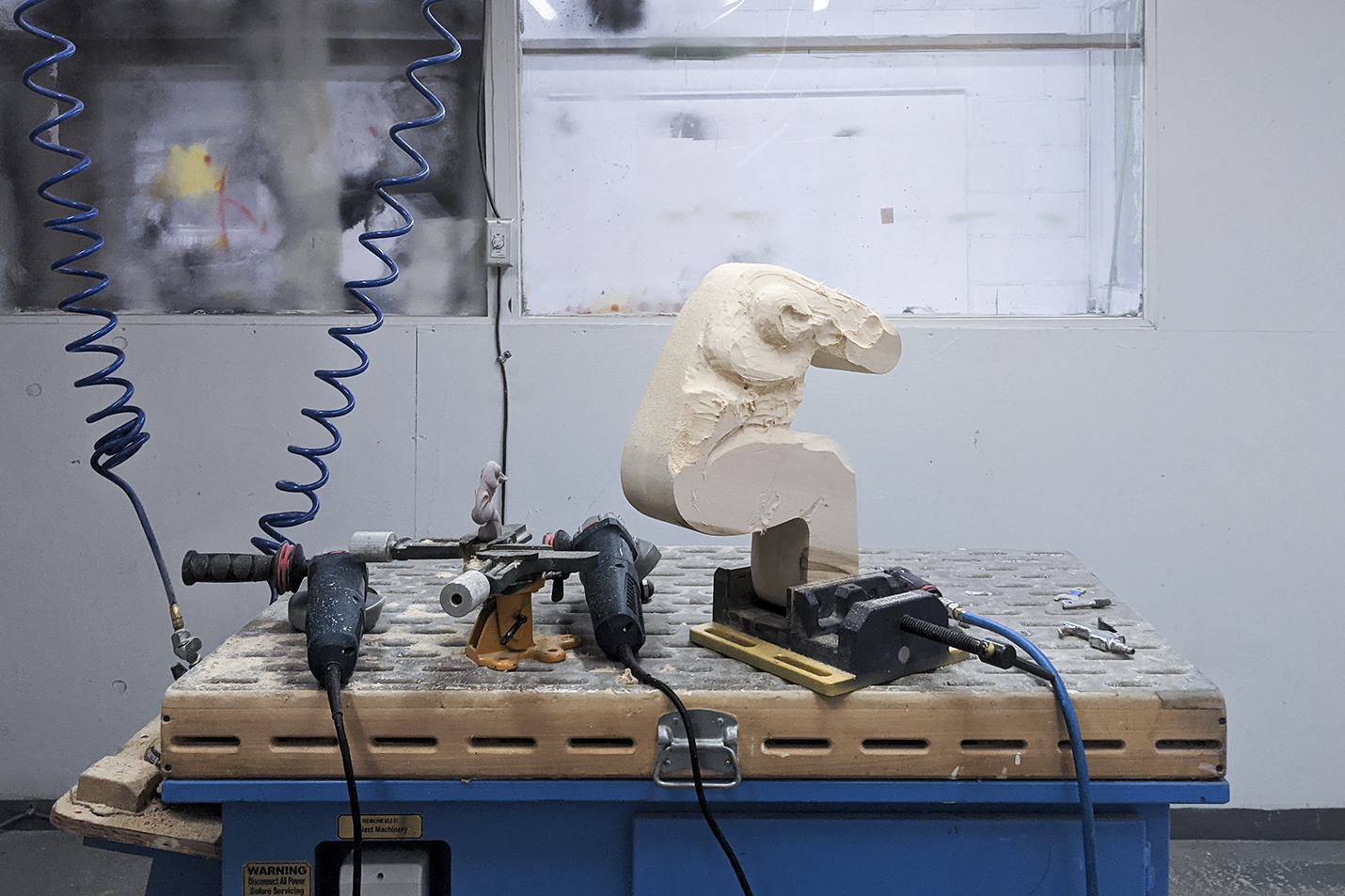
My work centers on the convergence of technology, anatomy, and language. I draw from the physicality of utilitarian objects and their tendency to closely mirror the bodies of living beings, especially our own. I am interested in ordinary objects that can outlast their owners and be passed on or re-iterated for generations. Such items persist as extensions of ourselves, setting us apart from other species. Even when these objects’ physical forms become less prevalent– their functions, shapes and meanings continue to resonate in our collective memories. Through repetition, objects of utility often transcend materiality, evolve into symbols, and seep into the realm of language– generating new meanings.
Pictographic languages like hieroglyphics, digital icons, architectural notations, and public signage have all served as catalysts for my work. I am drawn to graphical symbols that convey meaning through visual resemblance to physical objects. Known as pictographs, such symbols have served as the earliest form of writing. My process involves carving these symbols into tangible, handcrafted objects, often to translate them back into abstracted images through techniques like etching, photography, and video—thereby emphasizing the reiterative nature of symbols and their potential for varied interpretations. This multi-layered translation process enables me to both distort and preserve meaning, coupling the illegible with the familiar. As I re-examine the standardized images that are designed to guide us, I seek to address deeper, unresolved themes of daily life. I question the pursuit of universal understanding by challenging our illusions of coherence and introducing uncertainty as a truer reflection of reality.